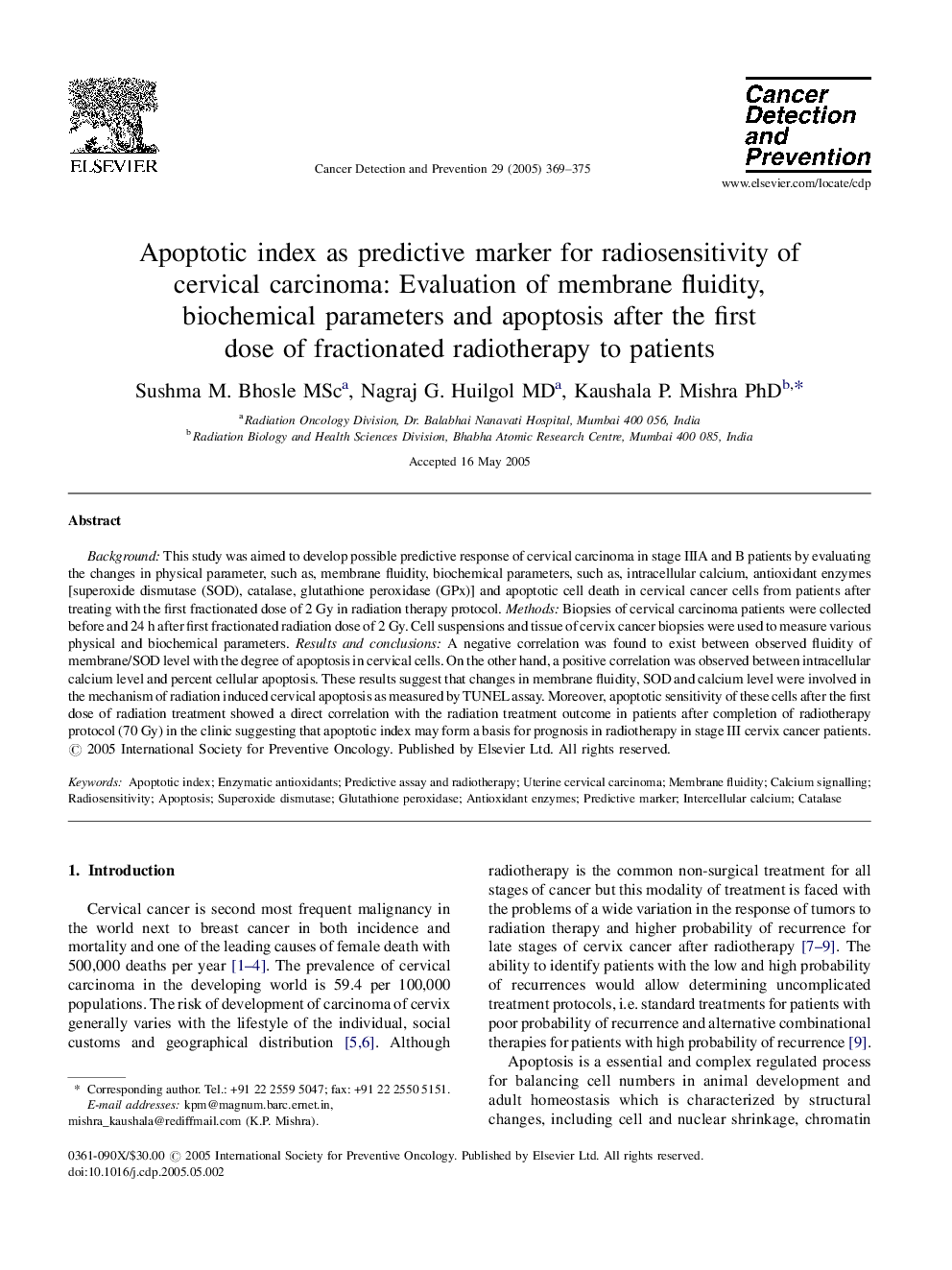| Article ID | Journal | Published Year | Pages | File Type |
|---|---|---|---|---|
| 10896901 | Cancer Detection and Prevention | 2005 | 7 Pages |
Abstract
Background: This study was aimed to develop possible predictive response of cervical carcinoma in stage IIIA and B patients by evaluating the changes in physical parameter, such as, membrane fluidity, biochemical parameters, such as, intracellular calcium, antioxidant enzymes [superoxide dismutase (SOD), catalase, glutathione peroxidase (GPx)] and apoptotic cell death in cervical cancer cells from patients after treating with the first fractionated dose of 2Â Gy in radiation therapy protocol. Methods: Biopsies of cervical carcinoma patients were collected before and 24Â h after first fractionated radiation dose of 2Â Gy. Cell suspensions and tissue of cervix cancer biopsies were used to measure various physical and biochemical parameters. Results and conclusions: A negative correlation was found to exist between observed fluidity of membrane/SOD level with the degree of apoptosis in cervical cells. On the other hand, a positive correlation was observed between intracellular calcium level and percent cellular apoptosis. These results suggest that changes in membrane fluidity, SOD and calcium level were involved in the mechanism of radiation induced cervical apoptosis as measured by TUNEL assay. Moreover, apoptotic sensitivity of these cells after the first dose of radiation treatment showed a direct correlation with the radiation treatment outcome in patients after completion of radiotherapy protocol (70Â Gy) in the clinic suggesting that apoptotic index may form a basis for prognosis in radiotherapy in stage III cervix cancer patients.
Keywords
Related Topics
Life Sciences
Biochemistry, Genetics and Molecular Biology
Cancer Research
Authors
Sushma M. MSc, Nagraj G. MD, Kaushala P. PhD,
